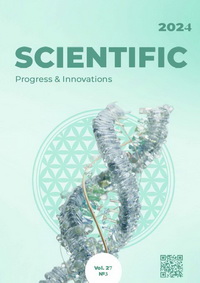Binary crops as an element of agroecosystem stabilization
DOI:
https://doi.org/10.31210/spi2024.27.03.02Keywords:
binary crops, soil science, organic farming, agroecosystemsAbstract
Modern scientific and practical views on the concept of binary crops are systematized. It is stated that with the development of agricultural technologies and the formation of a trend towards the production of environmentally friendly and organic agricultural products, binary crops can become an important technological chain for the transition from intensive to organic forms of management. Despite the diversity of crops and agroclimatic conditions, two main components remain traditional: legumes and cereals, due to the peculiarities of their root systems and chemical composition. For Ukraine, a classic example is vetch-oat mixture, which is an unsurpassed example of binary crops. The selection of crops for binary cultivation depends on the physiological and biochemical properties of individual species, soil conditions, peculiarities of ontogeny, the direction of use, etc. Over the past decades, attention has increased significantly to the cultivation of cereal grains, corn, sunflower in a mixture with soybeans, clover, alfalfa, sainfoin, lupine and other legumes. Under conditions of sufficient moisture, it is effective to add up to five to seven components to the mixture. There is experience in using "cocktails" that include up to 40 plant species. In terms of use, binary crops are created for fodder production (corn + soybeans, vetch + oats), for commercial production (sunflower + vetch, corn + fodder beans), as cover crops for perennial grasses (alfalfa + barley, alfalfa + corn), for green manure (vetch + oats), and honey agrocenoses (phacelia + pear). The cultivation of annual legumes, which provide shade from direct solar radiation, protection from erosion processes, and are a source of biological nitrogen between rows of tall crops (sunflower, corn), not only increases yields but also improves soil properties and expands agroecological areas. It has been proven that the use of moisture from different horizons by the root system of binary components increases the efficiency of plant transpiration. Similar patterns are observed in the use of nutrients and solar energy. Binary agrocenoses contribute to the accumulation of organic biomass and biogenic elements in the soil, activation of microbiological processes, and overall stabilization of agroecosystems.
Downloads
Published
How to Cite
Issue
Section
License
Copyright (c) 2024 Scientific Progress & Innovations

This work is licensed under a Creative Commons Attribution 4.0 International License.

 Creative Commons Attribution 4.0 International Licens
Creative Commons Attribution 4.0 International Licens